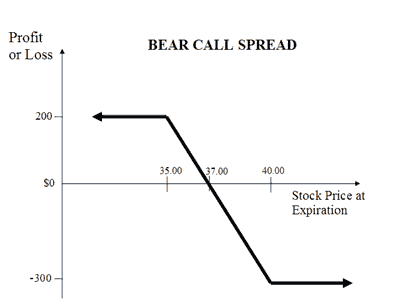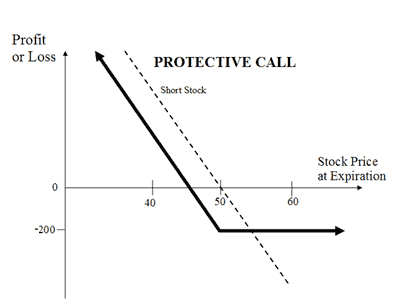 Zerodha (Trading & Demat Account)
Zerodha (Trading & Demat Account)
FREE Equity Delivery and MF
Flat ₹20/trade Intra-day/F&O
 Zerodha (Trading & Demat Account)
Zerodha (Trading & Demat Account)
FREE Equity Delivery and MF
Flat ₹20/trade Intra-day/F&O

|
|
Compare Bear Call Spread and Protective Call (Synthetic Long Put) options trading strategies. Find similarities and differences between Bear Call Spread and Protective Call (Synthetic Long Put) strategies. Find the best options trading strategy for your trading needs.
| Bear Call Spread | Protective Call (Synthetic Long Put) | |
|---|---|---|
 |
 |
|
| About Strategy | A Bear Call Spread strategy involves buying a Call Option while simultaneously selling a Call Option of lower strike price on same underlying asset and expiry date. You receive a premium for selling a Call Option and pay a premium for buying a Call Option. So your cost of investment is much lower. The strategy is less risky with the reward limited to the difference in premium received and paid. This strategy is used when the trader believes that the price of underlying asset will go down moderately. This strategy is also known as the bear call credit spread as a net credit is received upon entering the trade. The risk and reward both are limited in the strategy. How to use the bear call spread options strategy? The bear call spr... Read More | The Protective Call strategy is a hedging strategy. In this strategy, a trader shorts position in the underlying asset (sell shares or sell futures) and buys an ATM Call Option to cover against the rise in the price of the underlying. This strategy is opposite of the Synthetic Call strategy. It is used when the trader is bearish on the underlying asset and would like to protect 'rise in the price' of the underlying asset. The risk is limited in the strategy while the rewards are unlimited. How to use a Protective Call trading strategy? The usual Protective Call Strategy looks like as below for State Bank of India (SBI) Shares which are currently traded at Rs 275 (SBI Spot Price): Protective Call Orders - SBI Stock Orde... Read More |
| Market View | Bearish | Bearish |
| Strategy Level | Beginners | Beginners |
| Options Type | Call | Call + Underlying |
| Number of Positions | 2 | 2 |
| Risk Profile | Limited | Limited |
| Reward Profile | Limited | Unlimited |
| Breakeven Point | Strike Price of Short Call + Net Premium Received | Underlying Price - Call Premium |
| Bear Call Spread | Protective Call (Synthetic Long Put) | |
|---|---|---|
| When to use? | The bear call spread options strategy is used when you are bearish in market view. The strategy minimizes your risk in the event of prime movements going against your expectations. |
The Protective Call option strategy is used when you are bearish in market view and want to short shares to benefit from it. The strategy minimizes your risk in the event of prime movements going against your expectations. |
| Market View | Bearish When you are expecting the price of the underlying to moderately go down. |
Bearish When you are bearish on the underlying but want to protect the upside. |
| Action |
Let's assume you're Bearish on Nifty and are expecting mild drop in the price. You can deploy Bear Call strategy by selling a Call Option with lower strike and buying a Call Option with higher strike. You will receive a higher premium for selling a Call while pay lower premium for buying a Call. The net premium will be your profit. If the price of Nifty rises, your loss will be limited to difference between two strike prices minus net premium. |
|
| Breakeven Point | Strike Price of Short Call + Net Premium Received The break even point is achieved when the price of the underlying is equal to strike price of the short Call plus net premium received. |
Underlying Price - Call Premium When the price of the underlying is equal to the total of the sale price of the underlying and premium paid. |
| Bear Call Spread | Protective Call (Synthetic Long Put) | |
|---|---|---|
| Risks | Limited The maximum loss occurs when the price of the underlying moves above the strike price of long Call. Maximum Loss = Long Call Strike Price - Short Call Strike Price - Net Premium Received |
Limited The maximum loss is limited to the premium paid for buying the Call option. It occurs when the price of the underlying is less than the strike price of Call Option. Maximum Loss = Call Strike Price - Sale Price of Underlying + Premium Paid |
| Rewards | Limited The maximum profit the net premium received. It occurs when the price of the underlying is greater than strike price of short Call Option. Max Profit = Net Premium Received - Commissions Paid |
Unlimited The maximum profit is unlimited in this strategy. The profit is dependent on the sale price of the underlying. Profit = Sale Price of Underlying - Price of Underlying - Premium Paid |
| Maximum Profit Scenario | Underlying goes down and both options not exercised |
Underlying goes down and Option not exercised |
| Maximum Loss Scenario | Underlying goes up and both options exercised |
Underlying goes down and Option exercised |
| Bear Call Spread | Protective Call (Synthetic Long Put) | |
|---|---|---|
| Advantages | It allows you to profit in a flat market scenario when you're expecting the underlying to mildly drop, be range bound or marginally rise. |
Minimizes the risk when entering into a short position while keeping the profit potential limited. |
| Disadvantage | Limited profit potential. |
Premium paid for Call Option may eat into your profits. |
| Simillar Strategies | Bear Put Spread, Bull Call Spread | Long Put |

Add a public comment...

FREE Intraday Trading (Eq, F&O)
Flat ₹20 Per Trade in F&O
|
|